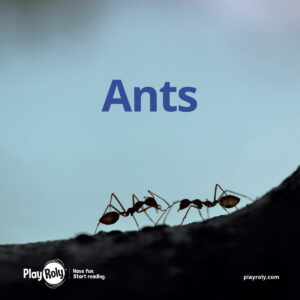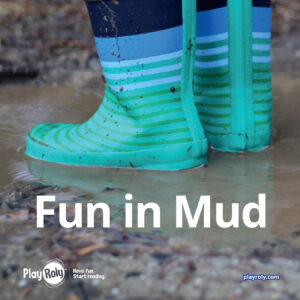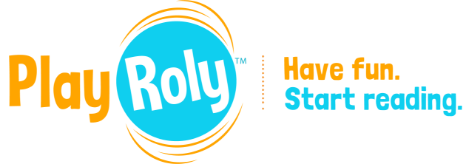Schools can improve reading outcomes by targeting age 3 to 5 reading skills
Today marks the one-year anniversary of the Ontario Human Rights Commission’s Right to Read Report. This report is an important element of the #righttoread social justice movement that continues to grow, and the result is a global wave of change-makers committed to a future of smiling, confident children who ALL learn to read on track. This group includes teachers advocating literacy training in their teacher degrees, teacher podcasters, regional teacher groups, dyslexia organizations, learning disability organizations, reading advocates, and journalists.
New reading strategies to transform our world
At the International Dyslexia Association Conference in San Antonio, TX, in November 2022, the message from reading research and education experts from around the world was clear: prevention, early identification, early intervention, and structured literacy should be our beginning reading strategies of the future.
These strategies helped our dyslexic son learn to read on track—avoiding the reading delays and early educational challenges endured by his entrepreneurial dad.
Current early reading skill statistics
| Grade Level | Reading skills |
| Starting Kindergarten | Top 20% of students*: • Know most letter names • Verbally segment sun into ss/uh/nn • Know some letter sounds • May sound-out (decode) short words |
| End of Kindergarten | The above skills typically remain below this level for 20% of students* |
| End of Grade 1 | Grade 1 reading skills for 20% of students remain much below the top 20%* |
*DIBELS percentile data pre-pandemic
Early literacy skills differ greatly amongst children and predict reading achievement. Targeting students’ early skills is a prevention reading strategy to improve the learning-to-read experience for all children, but especially important for our most vulnerable students—the bottom 20% that do not learn these skills during the first year of school.
Without helping the bottom 20% of kids learn these essential early skills age-appropriately, they must catch up to the top 20% starting on the first day of school. This gets harder with time—to catch up to kids in the middle of the class by the end of Grade 1, they must learn to double their reading fluency— reading twice as many words in a timed assessment.* This is a very big and important gap to bridge for kids to want to choose to read for pleasure, which exponentially grows their skills. This “Matthew effect” (where the rich get richer and the poor fall further and further behind) in reading is well documented.
To optimize success, prevention reading strategies target:
- Ages 3 to 5: supporting the development of pre-k literacy skills that predict reading achievement
- letter names – upper and lower case
- phonemic awareness hearing the first sound in sun: ssss
- verbal blending/segmenting of letter sounds in words: sss/uh/nn into sun
- very early decoding (sounding out words like sun, sat, Sam)
- Engagement and support to develop these skills for:
- Children
- Parents
- Early childhood educators
- Community stakeholders
- A strategy to address the encouragement, extra time, 1-on-1 learning, specialized techniques, and repetition necessary for our most vulnerable young students to master these skills
Why early identification and intervention?
The fall-out each year for the bottom 20%, at both a societal and personal level, is devastating. Our vulnerable populations, including homeless youth, adolescent suicides, and people in prisons, are linked to low reading ability. As a parent, I can tell you that it is heartbreaking and traumatic when your child falls behind in reading. Not only does your child’s confidence hit rock bottom without costly 1-on-1 support, but it is also impossible for them to catch up to classmates. For schools, when students do not learn enough in Kindergarten and Grade 1 to meet classroom reading expectations by the end of Grade 1, they typically remain behind classmates and below the benchmark throughout school. Kids like my son, who take longer to learn, need more costly, targeted, exaggerated, repetitive, interactive ways to learn, are less responsive to intervention as they get older, and are far more likely to drop out when they do not get the help they need. Very beginning reading is not taught in classrooms after Grade 1, so the learning gap becomes impossible to bridge.
“The Great Reading Divide” of ages 3 to 5
Why are the early years so important in reading? A common barrier to beginning reading is weakness in a verbal skill called phonemic awareness (discerning the phoneme or letter-sound ssss in the spoken word sun) that ideally develops at ages 3 to 5 but won’t develop age-appropriately for many kids who don’t easily hear phonemes in words. I term the highly variable aptitude for this skill the “Great Reading Divide.”
A prevention reading strategy explicitly teaches this skill age-appropriately to bridge this gap. Children born with a weakness in this verbal skill may benefit from learning with exaggerated phonemes, slowed down and repeated, without breaks, so they are easier to hear within a word. They also may respond well to 1-on-1, interactive, repetitive teaching. When they are taught in a way they can learn, verbal language skills develop more quickly at ages 3 to 5 than in older kids.
Teaching reading skills at ages 3 to 5? Isn’t reading the school’s job?
“It’s not a parent’s job to teach their child to read” is a fair comment. The school’s role in teaching an effective literacy program for ALL children to read and write proficiently between the ages of 5 and 18 is, of course, paramount and essential.
However, by empowering parents to easily and successfully support their child, especially in the critical early years, a small amount of time can dramatically improve their child’s educational experience.
Play Roly is a parent-friendly, free early reading resource for all kids aged 3 to 5
Play Roly supports parents in teaching their kids beginning reading skills at home. Schools share the Play Roly free early reading resource with parents, then support and encourage completion before students begin kindergarten.
Playing with Roly’s musical language of exaggerated phonemes (slowly pronounced letter sounds in a word) successfully develops phonemic awareness, the foundation of reading and writing.
Roly’s song embeds reading intervention techniques, so learning is as easy and fast as possible. Also, it’s fun—whether a child begins to develop phonemic awareness or understand Roly’s language of letter sounds in two videos (3 minutes) or 12 videos (18 minutes)—kids enjoy playing with Roly and with mom or dad.
Why young kids learn quickly with Roly
A young child is geared to learning language, imagination, and repetitive play—just what they use in Play Roly. Our most common kid quote after Roly’s video is, “Can we do it again?”
Play Roly’s series of engaging, 1-on-1 short videos are played at home where kids have recently learned to speak. Kids sing and play along to learn Roly’s language of reading.
When Roly wants to say sun, he sings the three notes: sssss,
uuuuuh,
nnnn. After each video young kids are asked, “What is Roly saying?” Then told the correct answer. Kids learn to blend Roly’s three notes together to understand him in under 20 minutes. Playfully learning verbal blending is a critical phonemic awareness reading skill.
Roly connects kids to books
At the end of the 26-video Play Roly program, kids read free books to their parents with help.
 |  |  |
One day
Our vision is that one day all parents will discover Play Roly through their child’s school and community stakeholders that partner with their school district. So that one day all kids can have fun and start reading age-appropriately at ages 3 to 5 – obliterating the old-school bell curve that greets the classroom on the first day of school.
We’d love to hear from you
If you share us with families as an early reading resource or try us as a parent, please let us know at roly@playroly.com. We’d love to hear from you!
Authors:
Lisa Sturdy, parent of a dyslexic child, wife of a dyslexic husband, co-founder of Play Roly, and Dr. Linda Siegel, Consultant to Ontario Human Rights Commission’s Right to Read Inquiry


